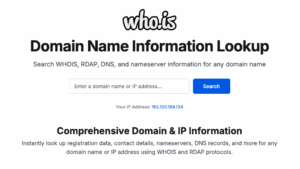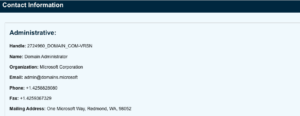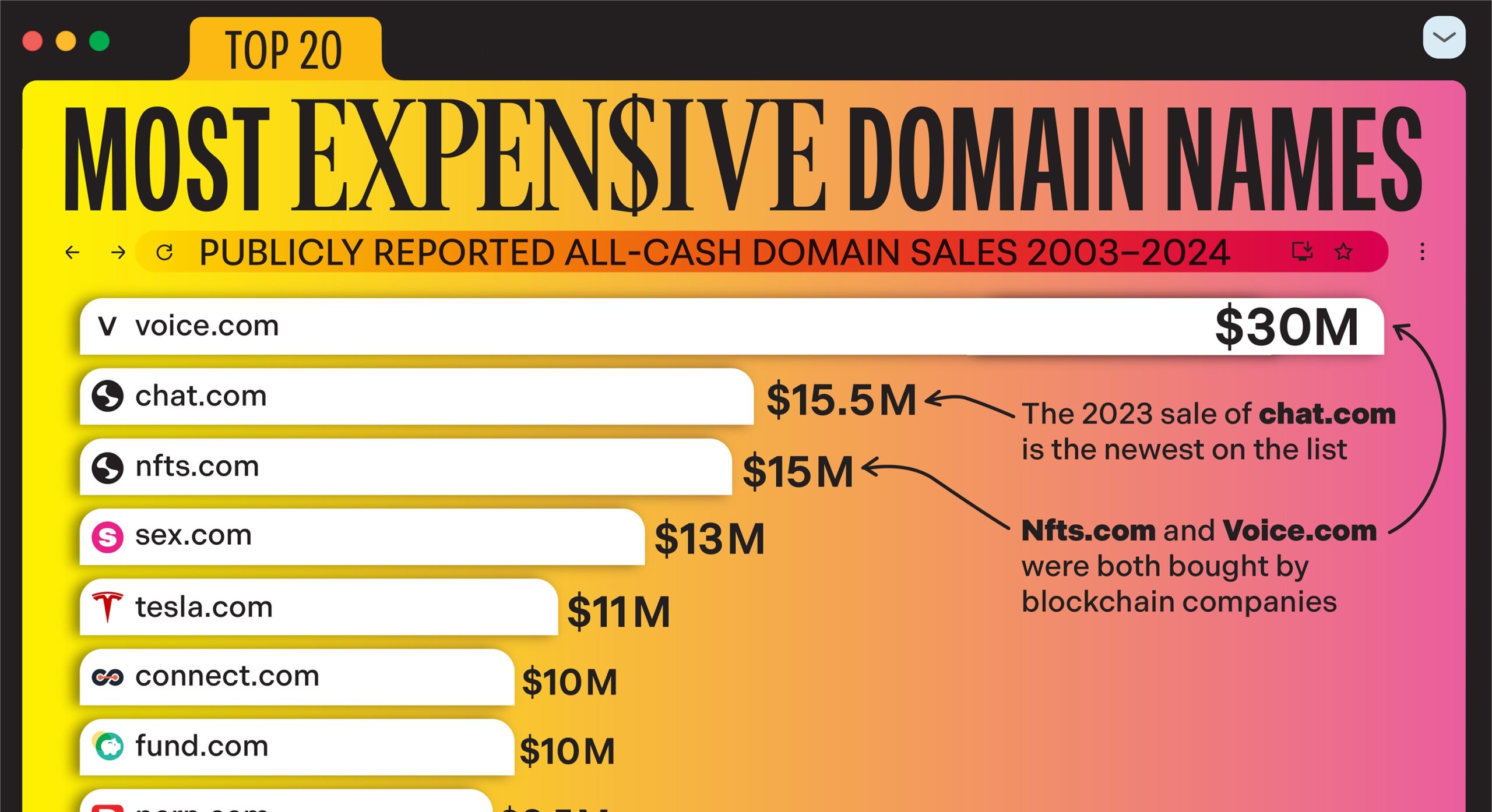What Is A Domain Name and Why Do I Need One?
Domain names are one of the foundations of every global brand – they’re your calling card online. In this post, domain name expert Joe Uddeme explains how they work and how to secure the right one for your business. You probably know more domain names than phone numbers these days. Think of all the news sites you know the address of – plus Amazon, Apple and all those big brands whose website URLs you can guess because nine times out of ten, it is their brand name + .com. While the world of domain names is easy and familiar at face value, behind the scenes, there’s a lot more going on. If you’re getting ready to buy a premium domain name – one costing in the thousands that will be memorable and potentially valuable for a business in the long term – you need to have a solid grasp of what you’re getting into. To stop you from confusing domain names with websites or even website hosting services, this post is a great place to start. Key Takeaways What is a domain name How does a domain name work How to choose the right name for your business Securing a name that will keep your business on track What Is A Domain Name? To put it simply, a domain name is the address of your website. It is the phrase or word that you will type into your URL bar of your browser to find your website. For example, our website is https://nameexperts.com/ You can purchase domain names through a domain registrar, through a hosting provider, or let a domain name broker help you. What is the DNS? You can’t really answer the question, “What is a domain name?” without addressing DNS. Domain names are part of a large network called the Domain Name System (DNS) and it is managed by the Internet Corporation for Assigned Names and Numbers (ICANN). The ICANN is a non-profit organization responsible for management and maintenance of the DNS, as well as regulating domain registrars. How Does the DNS Work? When you type a domain name into your browser, your computer will check if you’ve previously looked at that domain. If not, then your browser will contact the local DNS server to pull it up. Your local DNS server breaks down the domain name into sections. We’ll use our name again as an example. There are three parts to nameexperts.com – www., nameexperts, and .com. The .com is known as a top level domain (TLD) and the local DNS server will search for this section first, and then serves to find all the details of your domain name and send that information back to the browser you’re using. There are obviously a lot more technical steps to it, but that’s the basics of how the DNS works. Let’s talk more about what you really need to know – what types of domain name extensions are available. Different Types of Domain Name Extensions All domain names are made up of a website name (nameexperts), and a top level domain (.com). Though the extensions can vary, we think it is useful to know the differences between the types of top-level domains available so that when it’s time to choose your domain name, you choose the right one. The two types we are going to talk about today are Generic Top-Level Domains (gTLDs) and Sponsored Top-Level Domains (sTLDs). Generic Top-Level Domains (gTLDs) Normally, the best course of action is to choose a reputable TLD like .com, .net, or .org. But because these are so popular, there are millions of domain names that have been registered to date. So the name you want might be taken (read our post: “How to buy a domain owned by someone else”) – or it may be hard to find a name that works. Here are some of the most generic TLDs: .com (commercial) .info (information) .org (organizational) .net (network) .biz (business) Sponsored Top-Level Domains (rTLDs) In addition to gTLDs, there are also some top level domains that are sponsored by organizations or agencies for very specific and often exclusive use. Here are some examples you’ll recognize: .gov (used by the US government) .edu (used by educational institutions) .int (used by international organizations) .mil (limited to US military entities only) Subdomains We thought we should also mention subdomains. A subdomain is also known as a third level domain and is an extra part of a domain name. They are viewed as separate websites by the search engines, so creating subdomains can help improve your site’s SEO. Specifically, a good time to use a subdomain is for a blog. It might look like https://blog.nameexperts.com. How To Choose The Right Domain Name Now that we’ve answered what is a domain name, we want to help you choose a strong domain name that accurately reflects your business. Ideally, you want to be easy for your target market to remember and be something that is timeless. Your domain name broker can help you find the perfect domain name and get you started with the process that goes along with it. Begin by doing some research on keywords that are relevant for your business. Whether it’s the name of your business or another keyword that relates to your business and you want to rank for it, this type of domain name will help improve your site’s SEO (search engine optimization). Another tip is to keep your domain short and memorable. You want it to stand out but be easy to remember – try to keep it to three words or less. You also want to make sure you avoid numbers and hyphens. People won’t remember where they go and they might mistype. Which leads us into another tip for choosing your domain name, make sure it is easy to spell. Shy away from words with multiple spelling variations or one that might be difficult to pronounce. Think long term. You want a domain name that supports the growth of your business and will last for years to come. Changing your domain name later can really hurt your business. Working With A Domain Name Broker – The Easy Solution Getting your domain name right is crucial for your business or organization. It can help define your brand and form a lasting impression on your audience. Do your research, and then if you’re serious about securing a seemingly unavailable name, reach out to a domain broker. We can help you buy and register a name – even if it belongs to someone else. We can also advise on strong alternative names for your business. NameExperts.com has a selection of highly commercial names available for sale at any time. At the time of writing, these included eight.com, proud.com, fate.com and nickel.com. About the author Joe Uddeme is Director and Principal of Name Experts, one of the world’s leading domain name brokerage services. He has overseen domain name sales and acquisitions totaling more than $150 million and is renowned worldwide as a go-to expert in buying and selling premium domains. Contact us at: [email protected]






